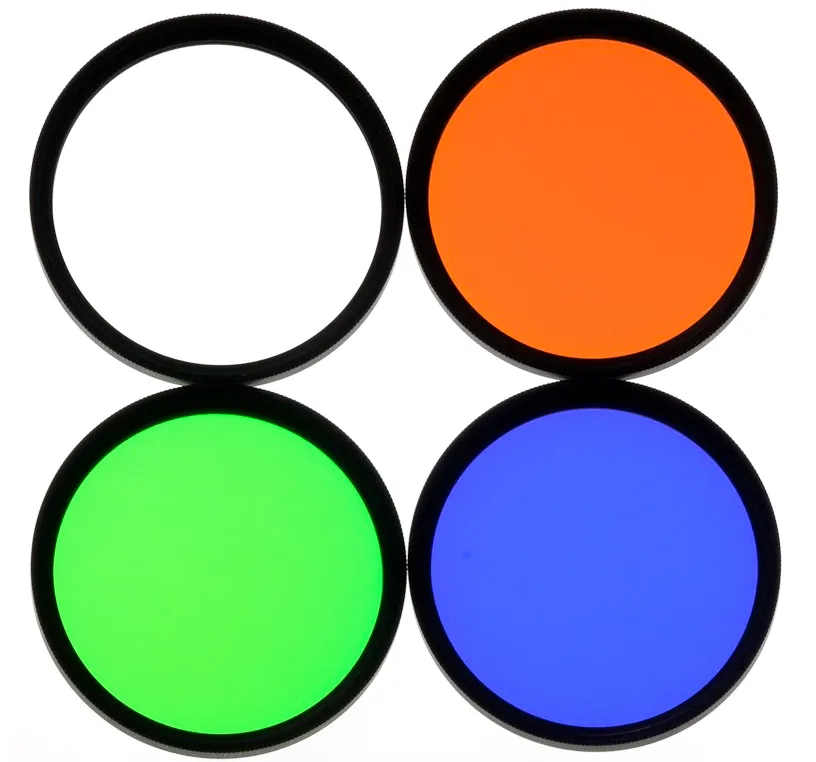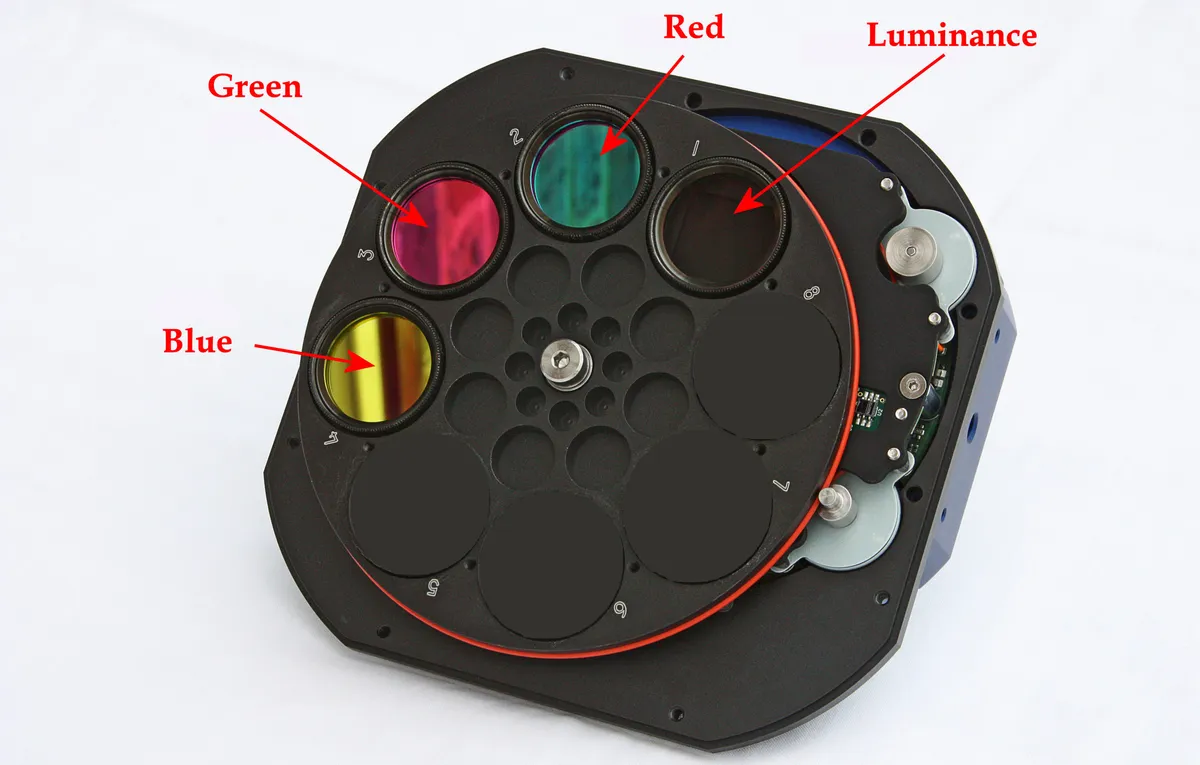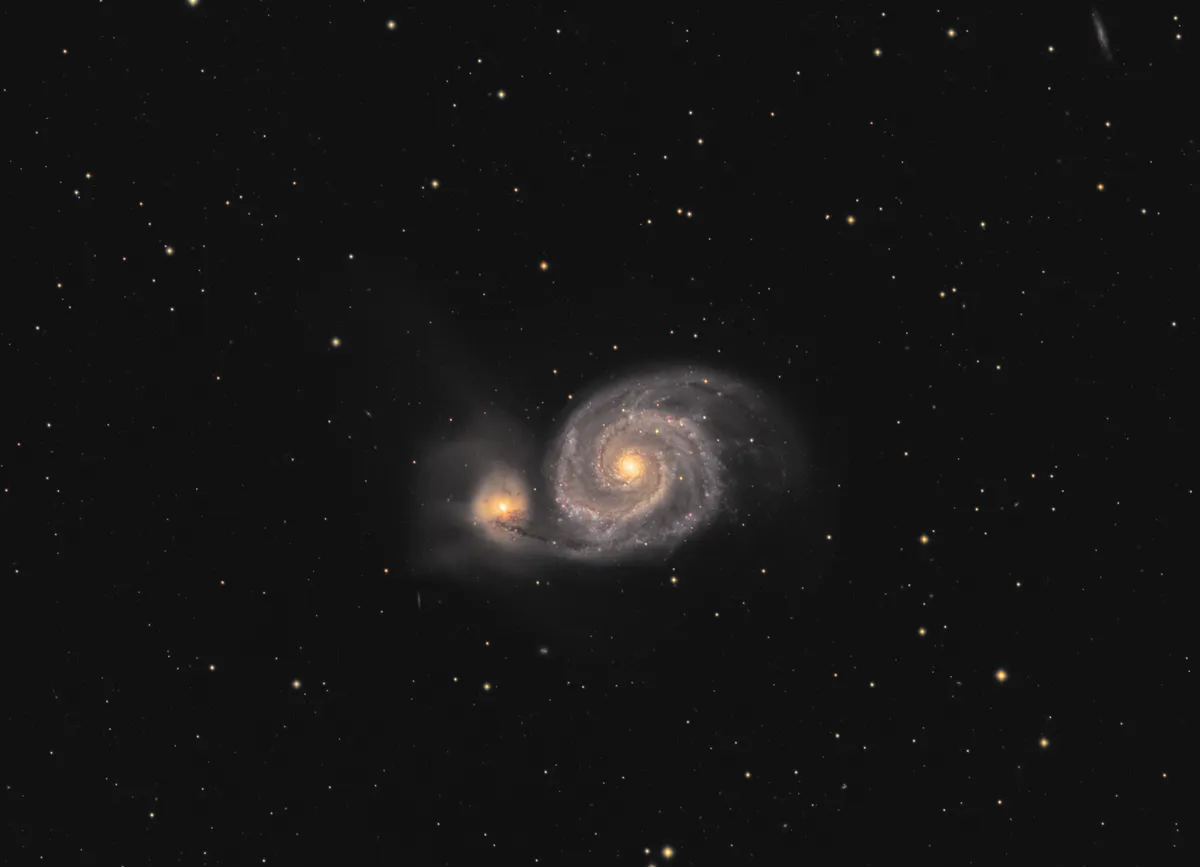Price: £236
Size: 1.25” mounted
Type: Dichroic
Substrate: 1mm thick glass
Supplier: First Light Optics
Contact: questions@firstlightoptics.com
A set of LRGB (Luminance, Red, Green and Blue) filters allow astrophotographers to capture full, natural colour images of celestial objects using a sensitive mono camera. They are suitable for both CCD and CMOS technology cameras.

The set of filters reviewed here are of a type known as ‘dichroic’. This means that unlike cheaper dye-based filters that absorb unwanted light, they use a very thin coating layered on a 1mm thick glass substrate formulated to pass certain wavelengths while reflecting others.
Different formulations in the manufacturing process allow a set of Red, Green and Blue filters to be produced with minimal losses in light transmission at the required wavelengths.

Combining the images captured by these three filters produces a colour image balanced to match the receptors in the human eye so the colours are very realistic.
The Luminance filter captures all the required wavelengths of light from red to blue and like the colour filters, its coatings also reject near Infrared light.
The colour and luminance data are processed separately and then combined to complete an image that shows both sharp detail and colour fidelity.
We tested the filters in our QSI-683 WSG-8 camera mounted on a Sky-Watcher Esprit 150 telescope.
The well machined low profile filter cells screwed accurately into our filter wheel with plenty of clearance from adjacent surfaces.
Although the filters claim to be parfocal, when used in a refractor, even one with excellent colour correction like the Esprit, it is usual to have to refocus slightly when changing filters and we measured a maximum variation of 78micron between the Luminance and Green filters.

The Astronomik L-RGB Type 2C filters produced excellent data that was easy to process into a final image and we would recommend the set to anyone who wants to capture colour images using a mono camera.
